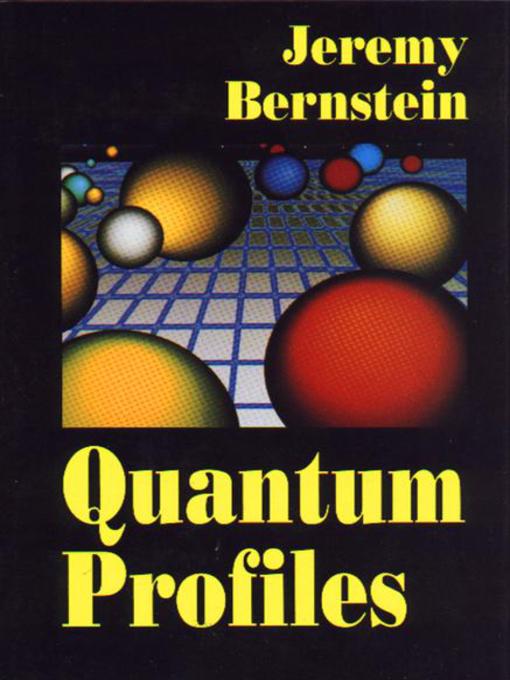For the prominent science writer Jeremy Bernstein, the profile is the most congenial way of communicating science. Here, in what he labels a "series of conversations carried on in the reader's behalf and my own," he evokes the tremendous intellectual excitement of the world of modern physics, especially the quantum revolution. Drawing on his well-known talent for explaining the most complex scientific ideas for the layperson, Bernstein gives us a lively sense of what the issues of quantum mechanics are and of various ways in which individual physicists approached them.
The author begins this series of interconnected profiles by describing the life and work of John Stewart Bell, the brilliant physicist employed at the gigantic elementary particle laboratory near Geneva (CERN), whose "Bell's Inequality" inspired a generation of researchers to confront, by experiment, just how peculiar and counterintuitional quantum mechanics really is. Bernstein then discusses the career of the prodigiously active and creative John Archibald Wheeler, who worked in the beginning stages of almost every branch of contemporary physics and invented the terms "black hole," "ergo-sphere," "geon," "Planck length," and "stellarator." The book closes with a moving commentary on the correspondence, of fifty-two years duration, between Einstein and the gentle, talented, but little-known Swiss engineer Michele Angelo Besso. "Of all the Einstein letters I have read these are surely the most striking, on a purely human level," writes Bernstein of the Einstein-Besso correspondence. "Einstein was not given to close friendships—'the merely personal,' as he once put it—but these letters are filled with 'the merely personal,' even though the deep issues of physics and its philosophy are never very far away."

